Visual Exploration of Energy Use in EU 28: Dynamics, Patterns, Policies
Abstract
:1. Introduction
2. Materials and Methods
2.1. Data Acquisition and Regional Overview
2.2. Visualization Tools
2.3. Country Clusters
3. Results
3.1. The Situation at a Country Level
3.2. Energy Use Associated with CO2 Emissions
3.3. Correlation Analysis
3.4. Sustainable Development and Energy Trends
4. Policy Implications
5. Discussion and Conclusions
Supplementary Materials
Author Contributions
Funding
Data Availability Statement
Conflicts of Interest
References
- Owusu, P.A.; Asumadu-Sarkodie, S. A review of renewable energy sources, sustainability issues and climate change mitigation. Cogent Eng. 2016, 3, 1167990. [Google Scholar] [CrossRef]
- Vera, I.A.; Langlois, L.M.; Rogner, H.H.; Jalal, A.I.; Toth, F.L. Indicators for sustainable energy development: An initiative by the International Atomic Energy Agency. Nat. Resour. Forum 2005, 29, 274–283. [Google Scholar] [CrossRef]
- United Nations. “The 17 Goals”, United Nations. 2015. Available online: https://sdgs.un.org/goals (accessed on 24 August 2021).
- Covert, T.; Greenstone, M.; Knittel, C.R. Will we ever stop using fossil fuels? J. Econ. Perspect. 2016, 30, 117–138. [Google Scholar] [CrossRef] [Green Version]
- Solomon, B.D.; Krishna, K. The coming sustainable energy transition: History, strategies, and outlook. Energy Policy 2011, 39, 7422–7431. [Google Scholar] [CrossRef]
- Wang, Q.; Wang, S. Is energy transition promoting the decoupling economic growth from emission growth? Evidence from the 186 countries. J. Clean. Prod. 2020, 260, 120768. [Google Scholar] [CrossRef]
- Bridge, G.; Bouzarovski, S.; Bradshaw, M.; Eyre, N. Geographies of energy transition: Space, place and the low-carbon economy. Energy Policy 2013, 53, 331–340. [Google Scholar] [CrossRef]
- Defeuilley, C. Energy transition and the future(s) of the electricity sector. Util. Policy 2019, 57, 97. [Google Scholar] [CrossRef]
- Hoppe, T.; de Vries, G. Social innovation and the energy transition. Sustainability 2018, 11, 141. [Google Scholar] [CrossRef] [Green Version]
- Steffen, B.; Egli, F.; Pahle, M.; Schmidt, T.S. Navigating the Clean Energy Transition in the COVID-19 Crisis. Joule 2020, 4, 1137–1141. [Google Scholar] [CrossRef]
- Ram, M.; Aghahosseini, A.; Breyer, C. Job creation during the global energy transition towards 100% renewable power system by 2050. Technol. Forecast. Soc. Chang. 2020, 151, 119682. [Google Scholar] [CrossRef]
- Carley, S.; Konisky, D.M. The justice and equity implications of the clean energy transition. Nat. Energy 2020, 5, 569–577. [Google Scholar] [CrossRef]
- Garcia-Casals, X.; Ferroukhi, R.; Parajuli, B. Measuring the socio-economic footprint of the energy transition. Energy Transit. 2019, 3, 105–118. [Google Scholar] [CrossRef] [Green Version]
- Patel, N. Environmental and Economical Effects of Fossil Fuels. J. Recent Res. Eng. Technol. ISSN 2014, 1, 1–12. [Google Scholar]
- Marques, A.C.; Fuinhas, J.A.; Pereira, D.A. Have fossil fuels been substituted by renewables? An empirical assessment for 10 European countries. Energy Policy 2018, 116, 257–265. [Google Scholar] [CrossRef]
- Apergis, N.; Payne, J.E. Renewable energy consumption and economic growth: Evidence from a panel of OECD countries. Energy Policy 2010, 38, 656–660. [Google Scholar] [CrossRef]
- Inglesi-Lotz, R. The impact of renewable energy consumption to economic growth: A panel data application. Energy Econ. 2016, 53, 58–63. [Google Scholar] [CrossRef] [Green Version]
- Bhattacharya, M.; Paramati, S.R.; Ozturk, I.; Bhattacharya, S. The effect of renewable energy consumption on economic growth: Evidence from top 38 countries. Appl. Energy 2016, 162, 733–741. [Google Scholar] [CrossRef]
- Adams, S.; Klobodu, E.K.M.; Apio, A. Renewable and non-renewable energy, regime type and economic growth. Renew. Energy 2018, 125, 755–767. [Google Scholar] [CrossRef]
- Measham, T.G.; Fleming, D.A.; Schandl, H. A conceptual model of the socioeconomic impacts of unconventional fossil fuel extraction. Glob. Environ. Chang. 2016, 36, 101–110. [Google Scholar] [CrossRef] [Green Version]
- Sheikh, N.J.; Kocaoglu, D.F.; Lutzenhiser, L. Social and political impacts of renewable energy: Literature review. Technol. Forecast. Soc. Chang. 2016, 108, 102–110. [Google Scholar] [CrossRef]
- Karytsas, S.; Mendrinos, D.; Karytsas, C. Measurement methods of socioeconomic impacts of renewable energy projects. IOP Conf. Ser. Earth Environ. Sci. 2020, 410, 012087. [Google Scholar] [CrossRef]
- Bogmans, C.; Kiyasseh, L.; Matsumoto, A.; Pescatori, A.; Milesi Ferretti, G.M. Energy, Efficiency Gains and Economic Development: When Will Global Energy Demand Saturate? IMF Work. Pap. 2020, 253, A001. [Google Scholar] [CrossRef]
- Saint Akadiri, S.; Alola, A.A.; Akadiri, A.C.; Alola, U.V. Renewable energy consumption in EU-28 countries: Policy toward pollution mitigation and economic sustainability. Energy Policy 2019, 132, 803–810. [Google Scholar] [CrossRef]
- Topolewski, Ł. Relationship between Energy Consumption and Economic Growth in European Countries: Evidence from Dynamic Panel Data Analysis. Energies 2021, 14, 3565. [Google Scholar] [CrossRef]
- Saidi, K.; Hammami, S. The impact of CO2 emissions and economic growth on energy consumption in 58 countries. Energy Rep. 2015, 1, 62–70. [Google Scholar] [CrossRef] [Green Version]
- Osobajo, O.A.; Otitoju, A.; Otitoju, M.A.; Oke, A. The impact of energy consumption and economic growth on carbon dioxide emissions. Sustainability 2020, 12, 7965. [Google Scholar] [CrossRef]
- Tsemekidi-Tzeiranaki, S.; Bertoldi, P.; Paci, D.; Castellazzi, L.; Serrenho, T.; Economidou, M.; Zangheri, P. Energy Consumption and Energy Efficiency Trends in the EU-28, 2000–2018; EUR 30328 EN. Available online: https://www.iea.org/reports/european-union-2020 (accessed on 9 November 2021).
- International Energy Agency. European Union 2020. In Energy Policy Review; Elsevier: Amsterdam, The Netherlands, 2020. [Google Scholar]
- Olkuski, T.; Suwała, W.; Wyrwa, A.; Zyśk, J.; Tora, B. Primary energy consumption in selected EU Countries compared to global trends. Open Chem. 2021, 19, 503–510. [Google Scholar] [CrossRef]
- Keim, D.A.; Mansmann, F.; Thomas, J.; Keim, D. Visual Analytics: How Much Visualization and How Much Analytics? ACM SIGKDD Explor. Newsl. 2010, 11, 5–8. [Google Scholar] [CrossRef]
- Kielman, J.; Thomas, J.; May, R. Introduction: Foundations and frontiers in visual analytics. Inf. Vis. 2009, 8, 239–246. [Google Scholar] [CrossRef]
- Keim, D.A.; Mansmann, F.; Schneidewind, J.; Thomas, J.; Ziegler, H. Visual Analytics: Scope and Challenges. In Lecture Notes in Computer Science; Simoff, S.J., Böhlen, M.H., Mazeika, A., Eds.; Springer: Berlin/Heidelberg, Germany, 2008; Volume 4404. [Google Scholar]
- Yao, X.; Yasmeen, R.; Padda, I.U.H.; Shah, W.U.H.; Kamal, M.A. Inequalities by energy sources: An assessment of environmental quality. PLoS ONE 2020, 15, e0230503. [Google Scholar] [CrossRef] [Green Version]
- World Bank. Energy Use (kg of Oil Equivalent per Capita). Atlas Method [Data File], World Development Indicators, The World Bank Group. 2021. Available online: https://data.worldbank.org/indicator/EG.USE.PCAP.KG.OE (accessed on 24 August 2021).
- World Bank. Fossil Fuel Energy Consumption (% of Total). Atlas Method [Data File], World Development Indicators, The World Bank Group. 2021. Available online: https://data.worldbank.org/indicator/EG.USE.COMM.FO.ZS (accessed on 24 August 2021).
- World Bank. Renewable Energy Consumption (% of Total Final Energy Consumption). Atlas Method [Data File], World Development Indicators, The World Bank Group. 2021. Available online: https://data.worldbank.org/indicator/EG.FEC.RNEW.ZS (accessed on 24 August 2021).
- World Bank. CO2 Emissions (Metric Tons per Capita). Atlas Method [Data File], World Development Indicators, The World Bank Group. 2021. Available online: https://data.worldbank.org/indicator/EN.ATM.CO2E.PC (accessed on 24 August 2021).
- World Bank. GDP (Current US$). Atlas Method [Data File], World Development Indicators, The World Bank Group. 2021. Available online: https://data.worldbank.org/indicator/NY.GDP.MKTP.CD (accessed on 24 August 2021).
- World Bank. Population Density (People per sq. km of Land Area). Atlas Method [Data File], World Development Indicators, The World Bank Group. 2021. Available online: https://data.worldbank.org/indicator/EN.POP.DNST (accessed on 24 August 2021).
- Mauri, M.; Elli, T.; Caviglia, G.; Uboldi, G.; Azzi, M. RAWGraphs: A Visualisation Platform to Create Open Outputs. In Proceedings of the 12th Biannual Conference on Italian SIGCHI Chapter, Cagliari, Italy, 18–20 September 2017. [Google Scholar] [CrossRef] [Green Version]
- IBM Corp. Released, IBM SPSS Statistics for Windows; IBM Corp: Armonk, NY, USA, 2019. [Google Scholar]
- Gapminder. Available online: https://www.gapminder.org/tools-offline/ (accessed on 9 November 2021).
- Harrell, F.E. With Contributions from Charles Dupont and Many Others. Hmisc: Harrell Miscellaneous. R Package Version 4.4-1. Resource Document. 2020. Available online: https://cran.r-project.org/web/packages/Hmisc/Hmisc.pdf (accessed on 9 November 2021).
- Wei, T.; Simko, V. R Package ‘Corrplot’: Visualization of a Correlation Matrix (Version 0.84). Available online: https://cran.rstudio.com/web/packages/corrplot/corrplot.pdf (accessed on 9 November 2021).
- R Core Team. R: A Language and Environment for Statistical Computing. R Foundation for Statistical Computing, Vienna, Austria. Available online: https://www.R-project.org/ (accessed on 9 November 2021).
- Veglis, A. Tableau Software; Encyclopedia of Big Data; Schintler, L., McNeely, C., Eds.; Springer: Cham, Switzerland, 2020. [Google Scholar] [CrossRef]
- Tableau Software. Big Data-TRENDS FÜR 2017; Tableau: Seattle, WA, USA, 2017. [Google Scholar]
- Mackinlay, J.D.; Winslow, K. Designing Great Visualizations; Tableau: Seattle, WA, USA, 2015. [Google Scholar]
- European Commission. 2030 Climate & Energy Framework. Available online: https://ec.europa.eu/clima/eu-action/climate-strategies-targets/2030-climate-energy-framework_en (accessed on 9 November 2021).
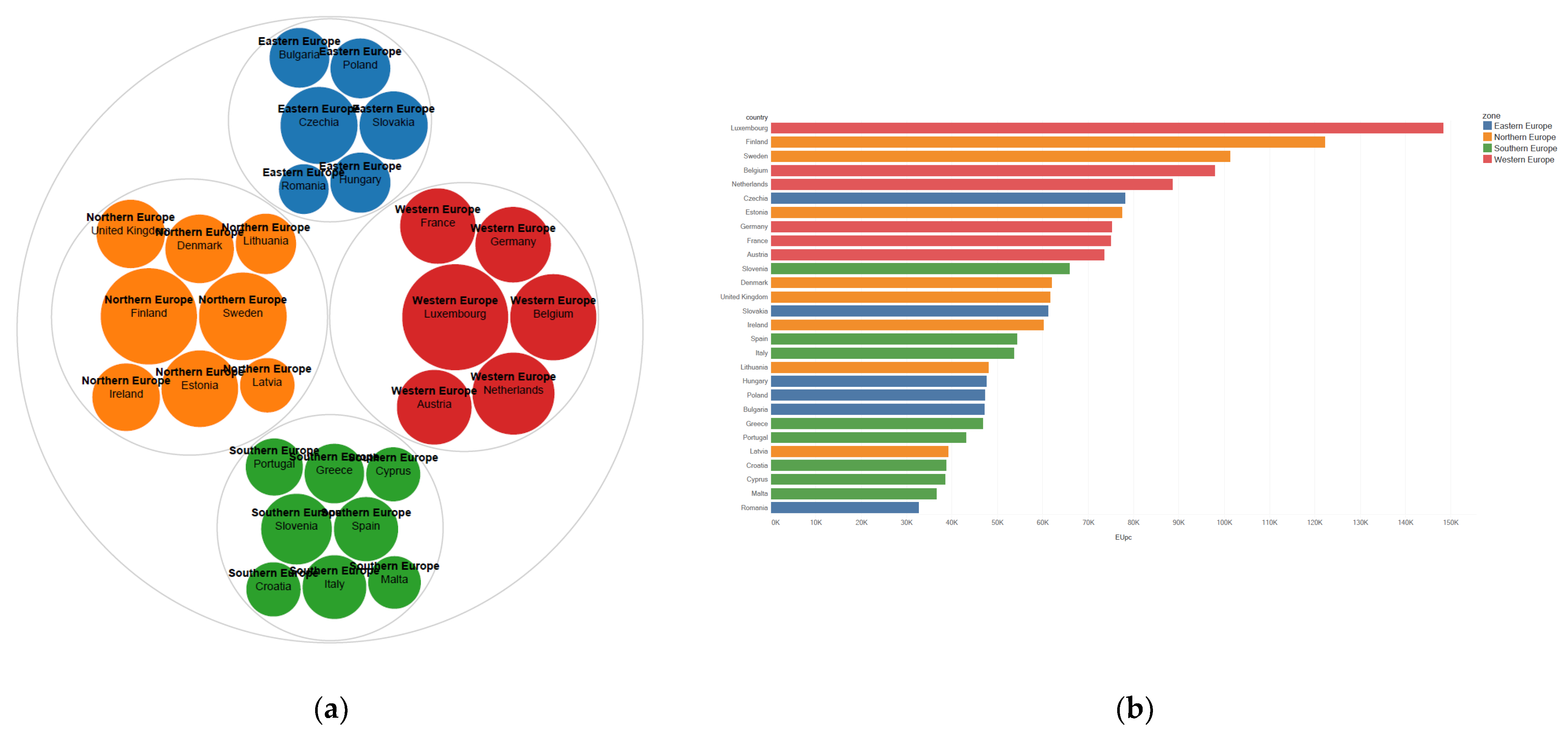
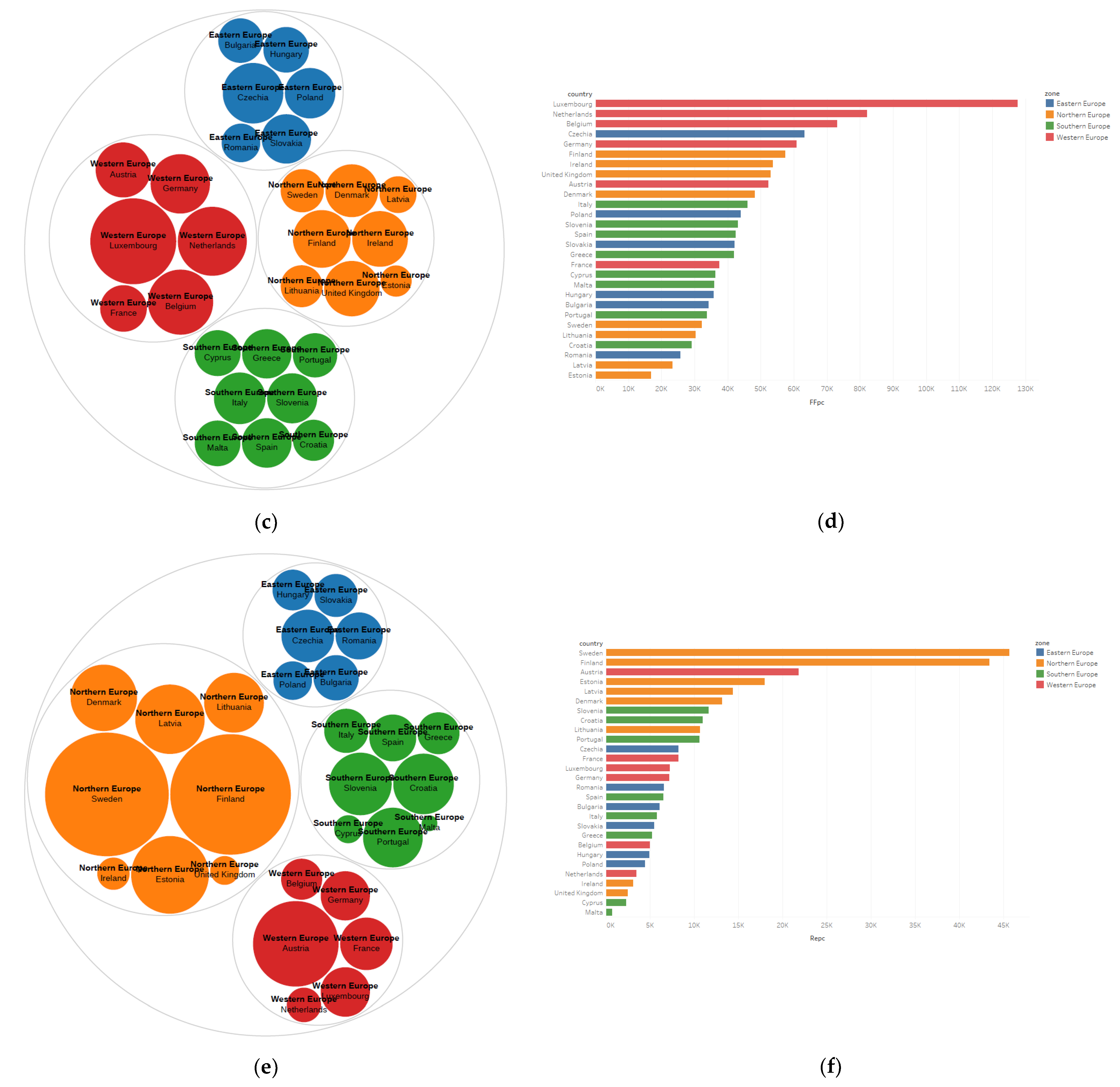

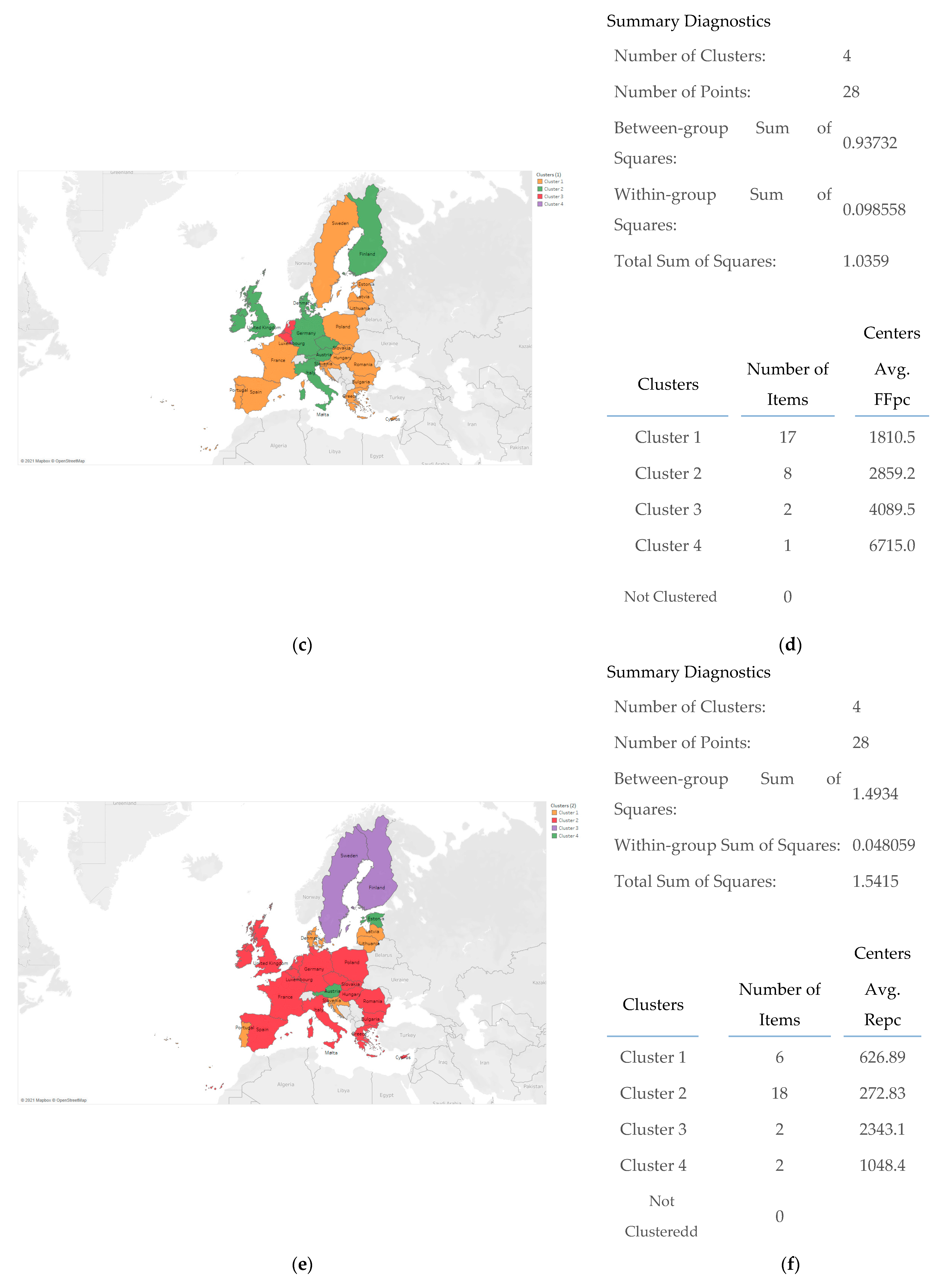
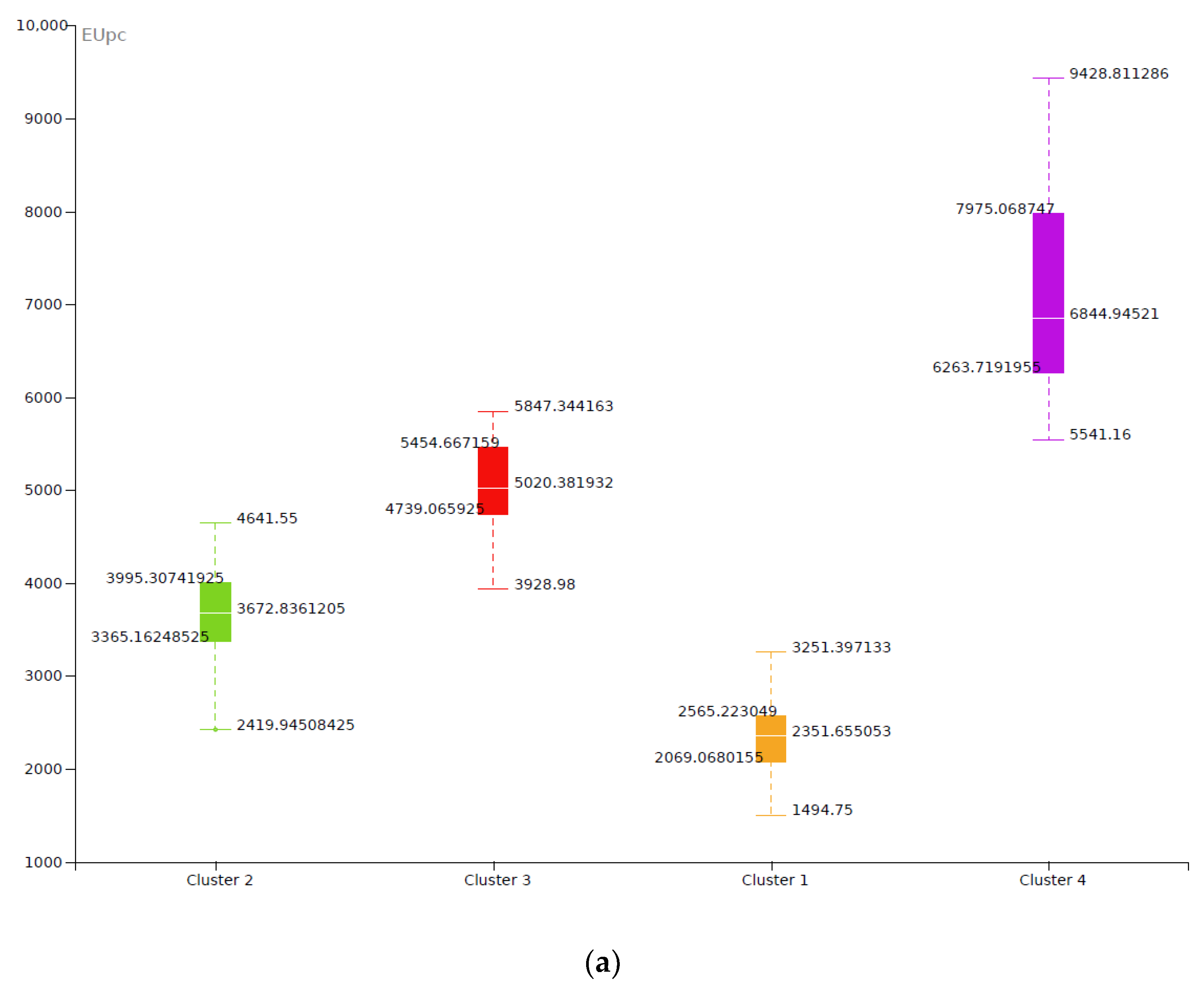


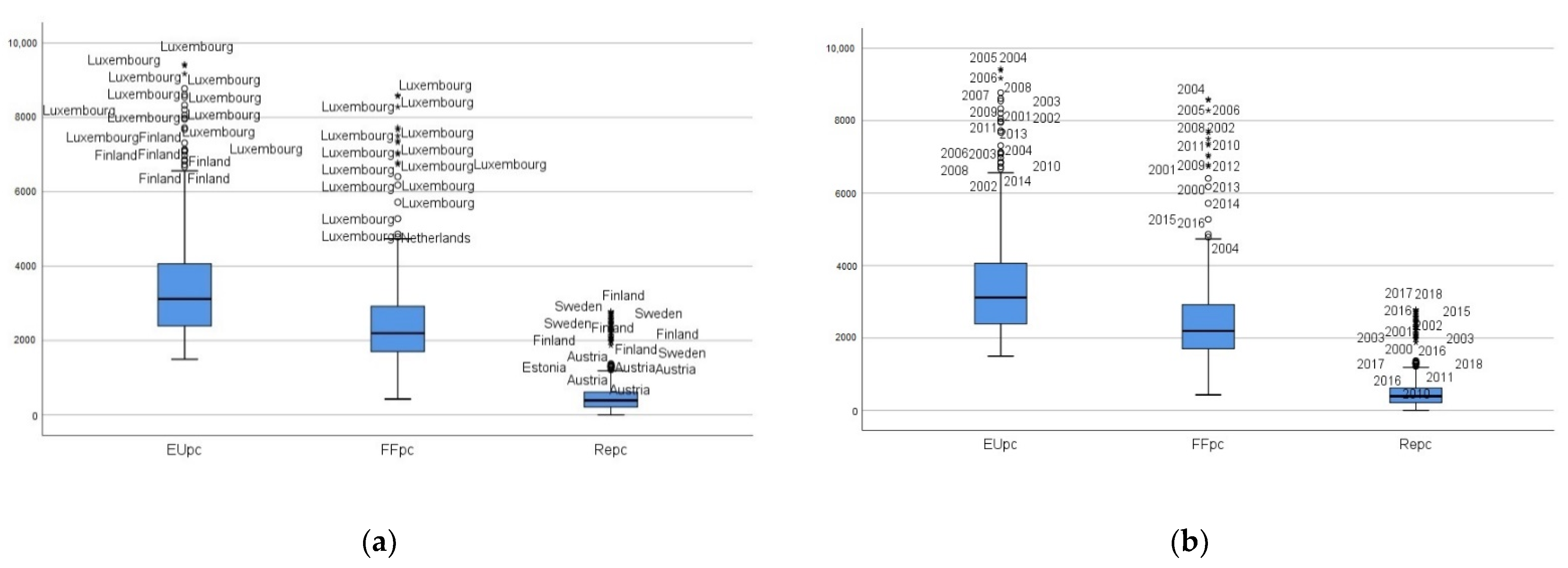
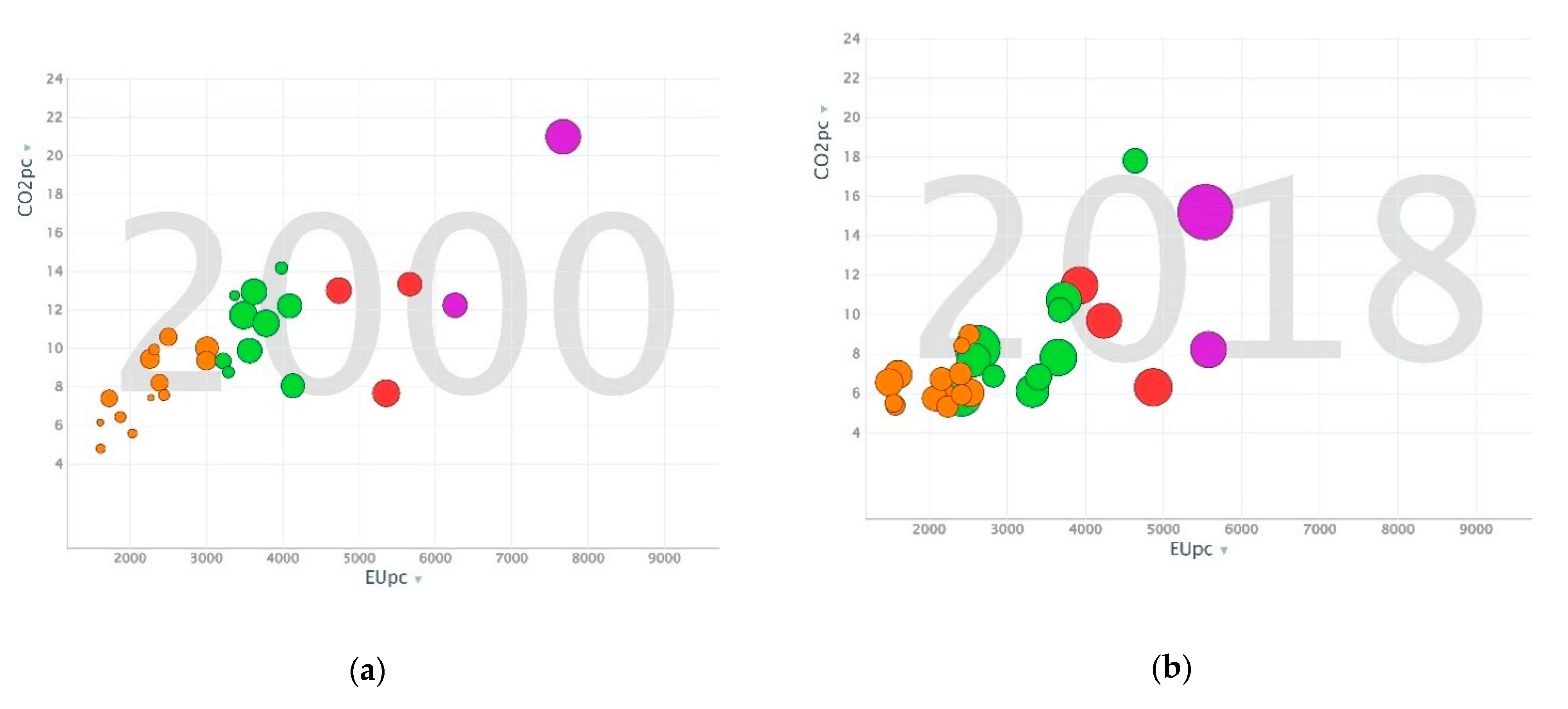
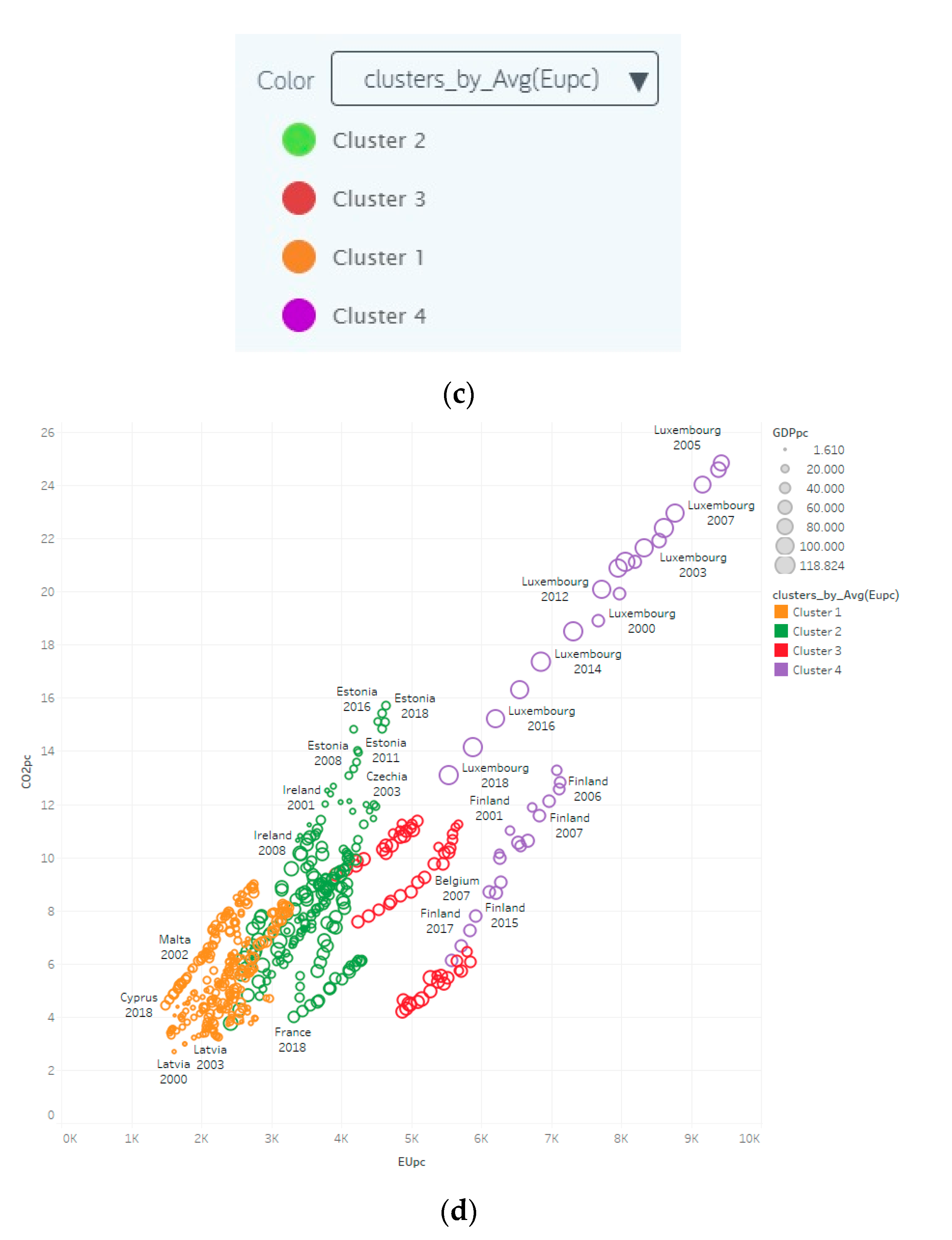
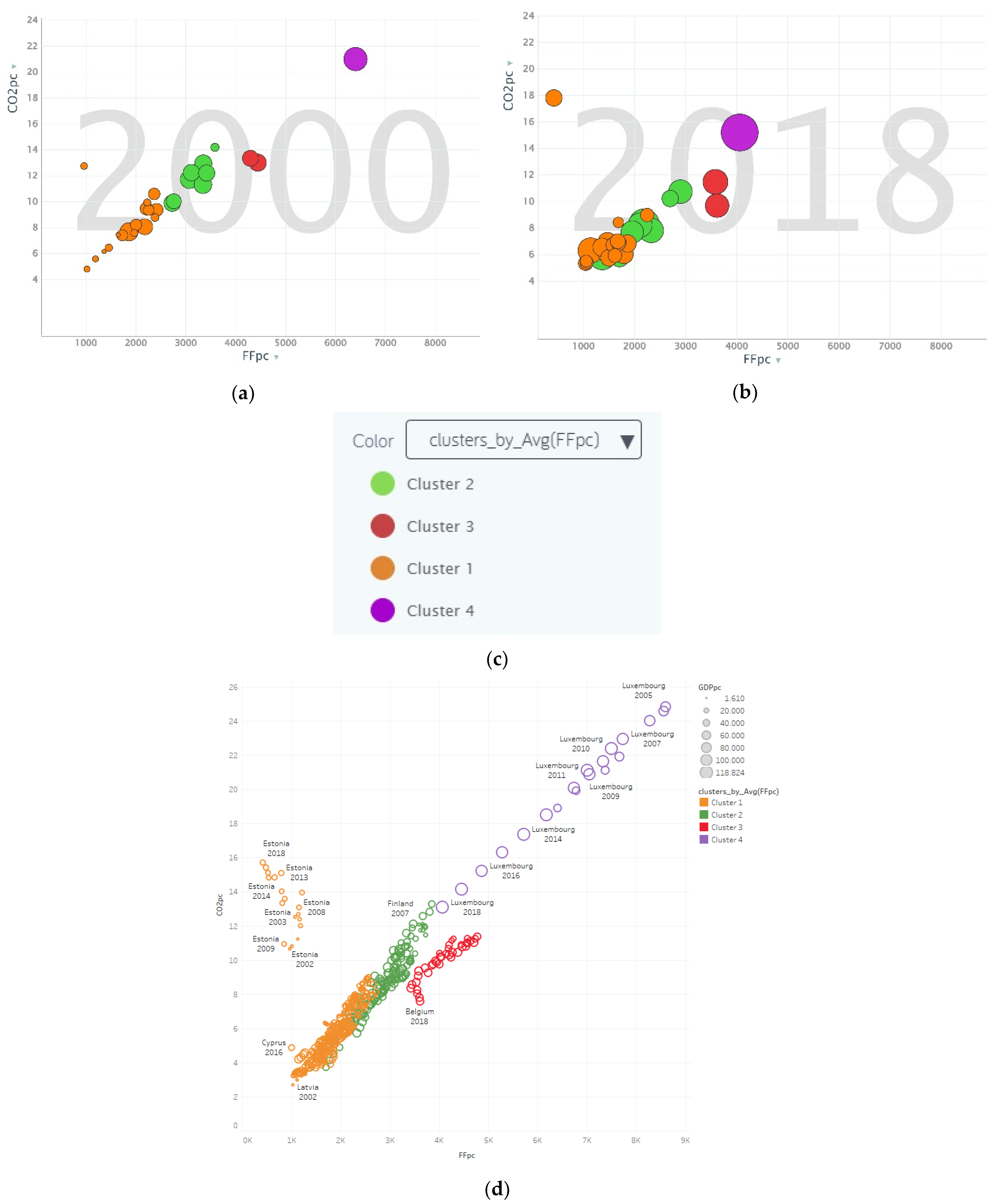
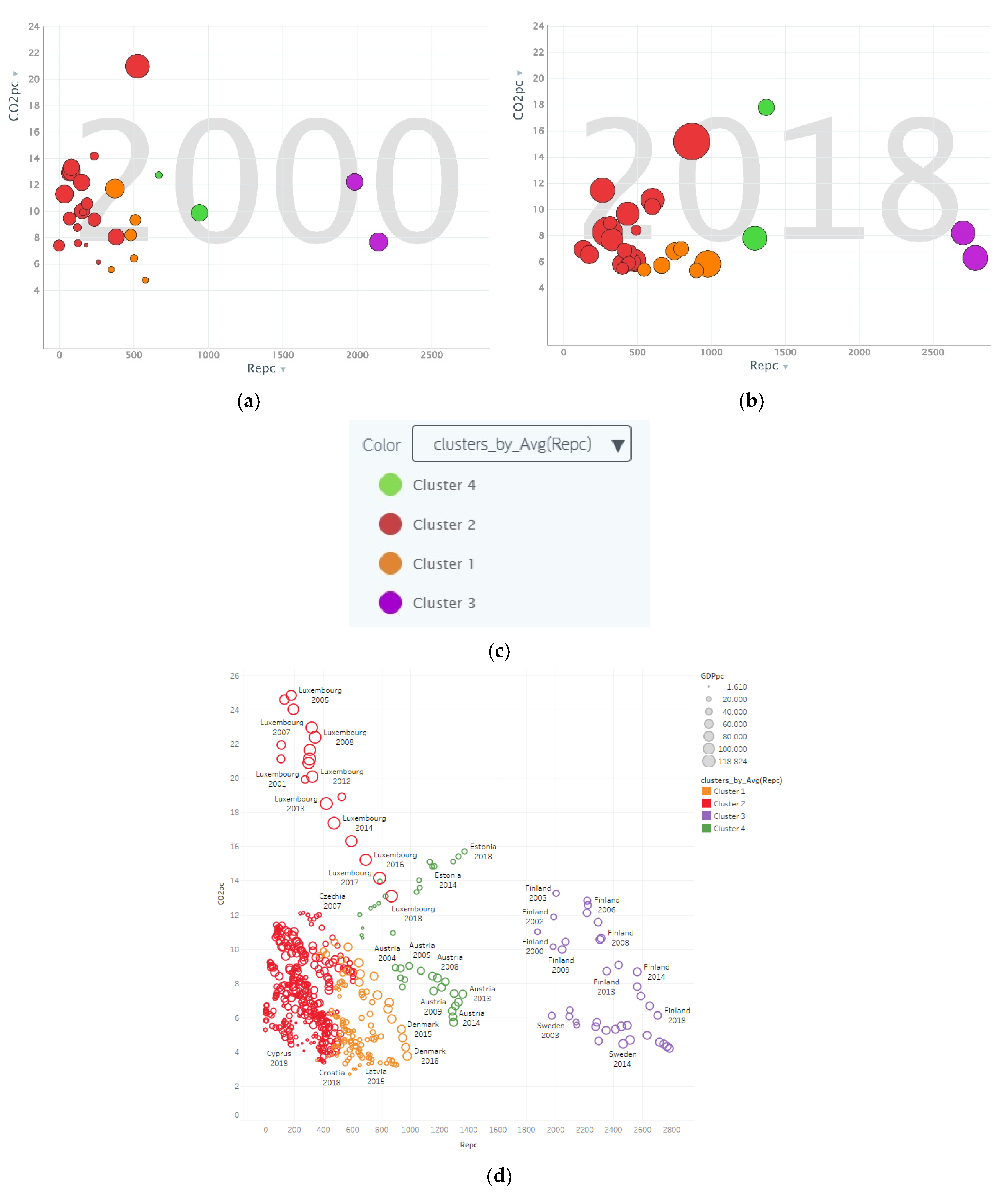
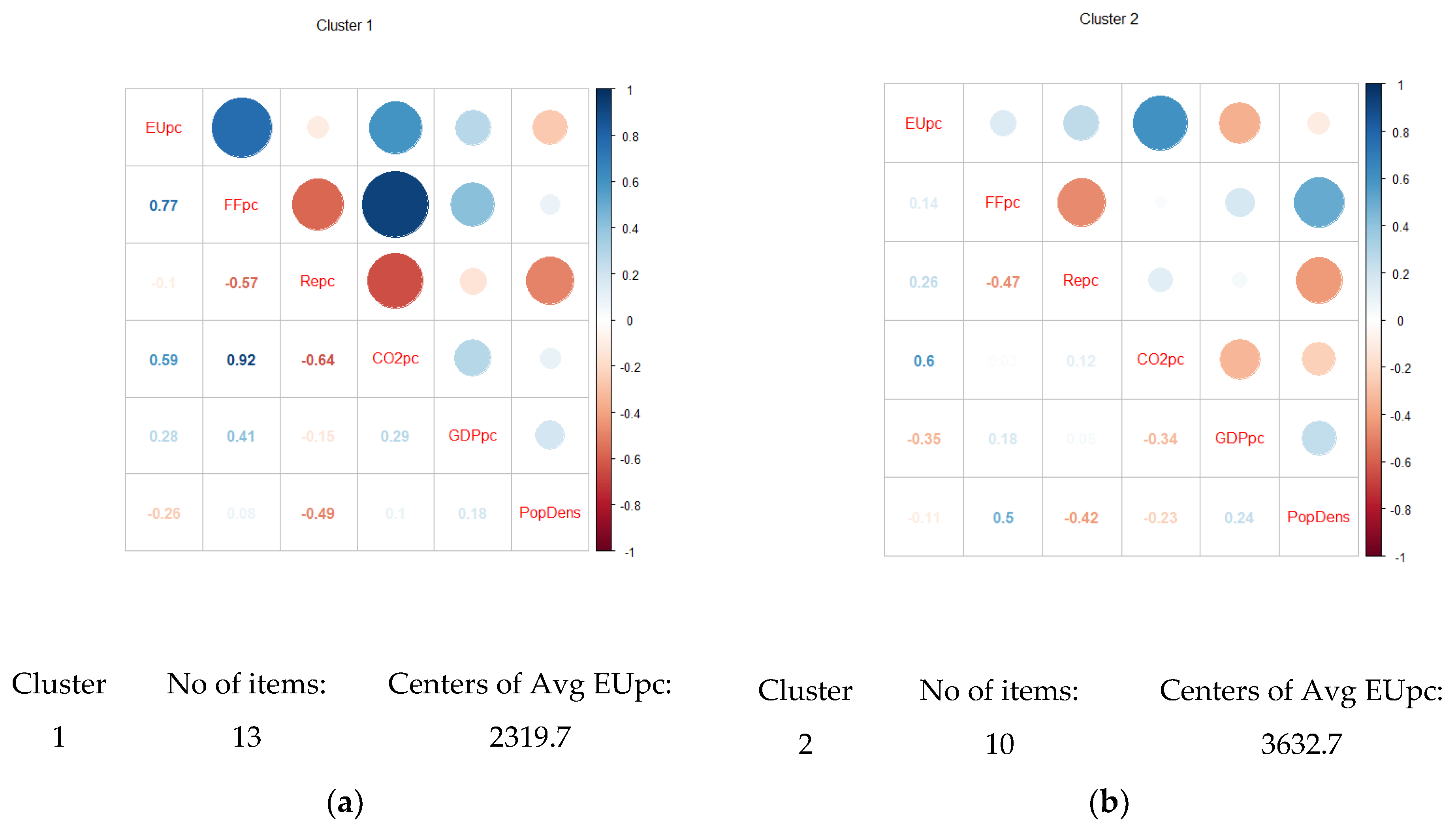
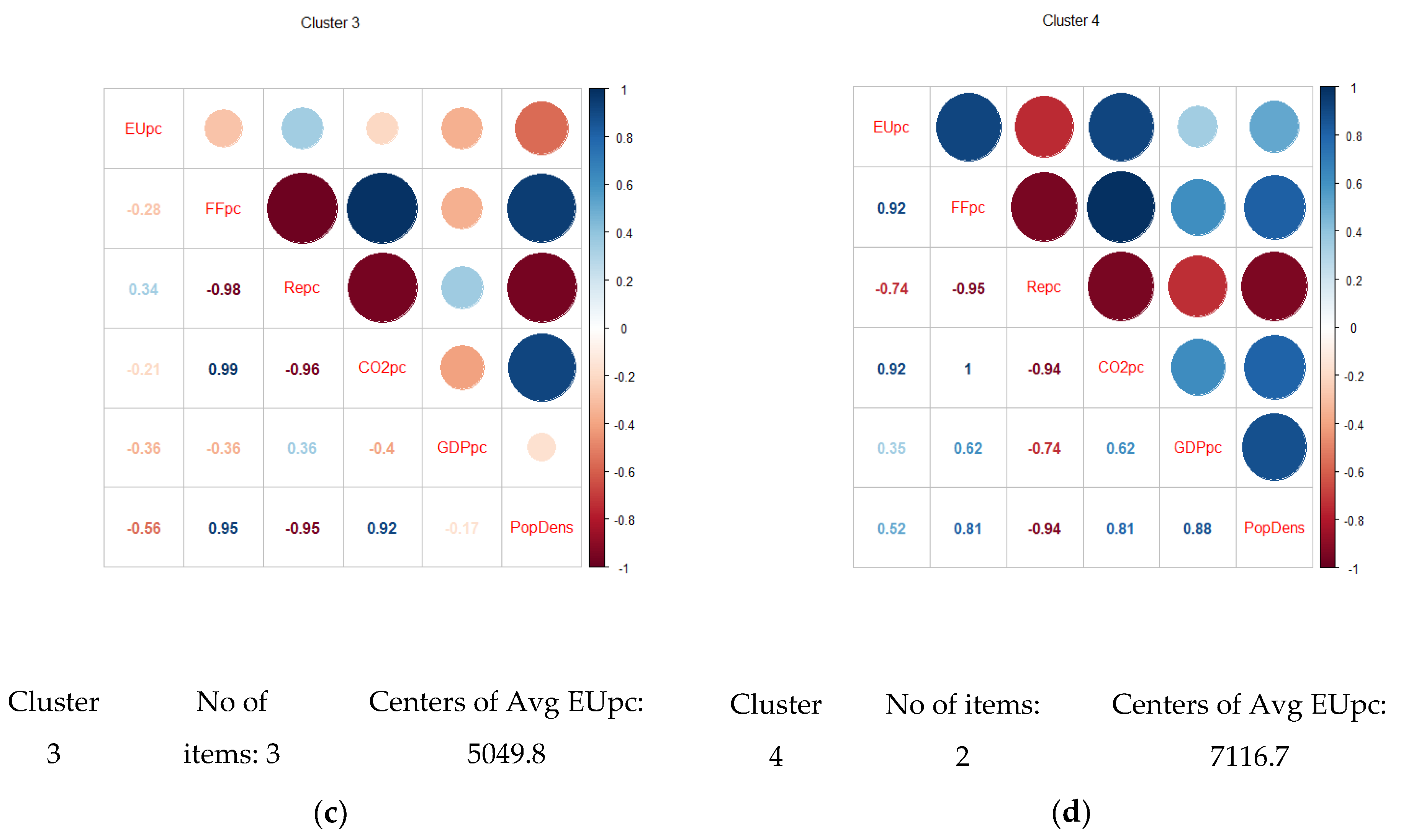

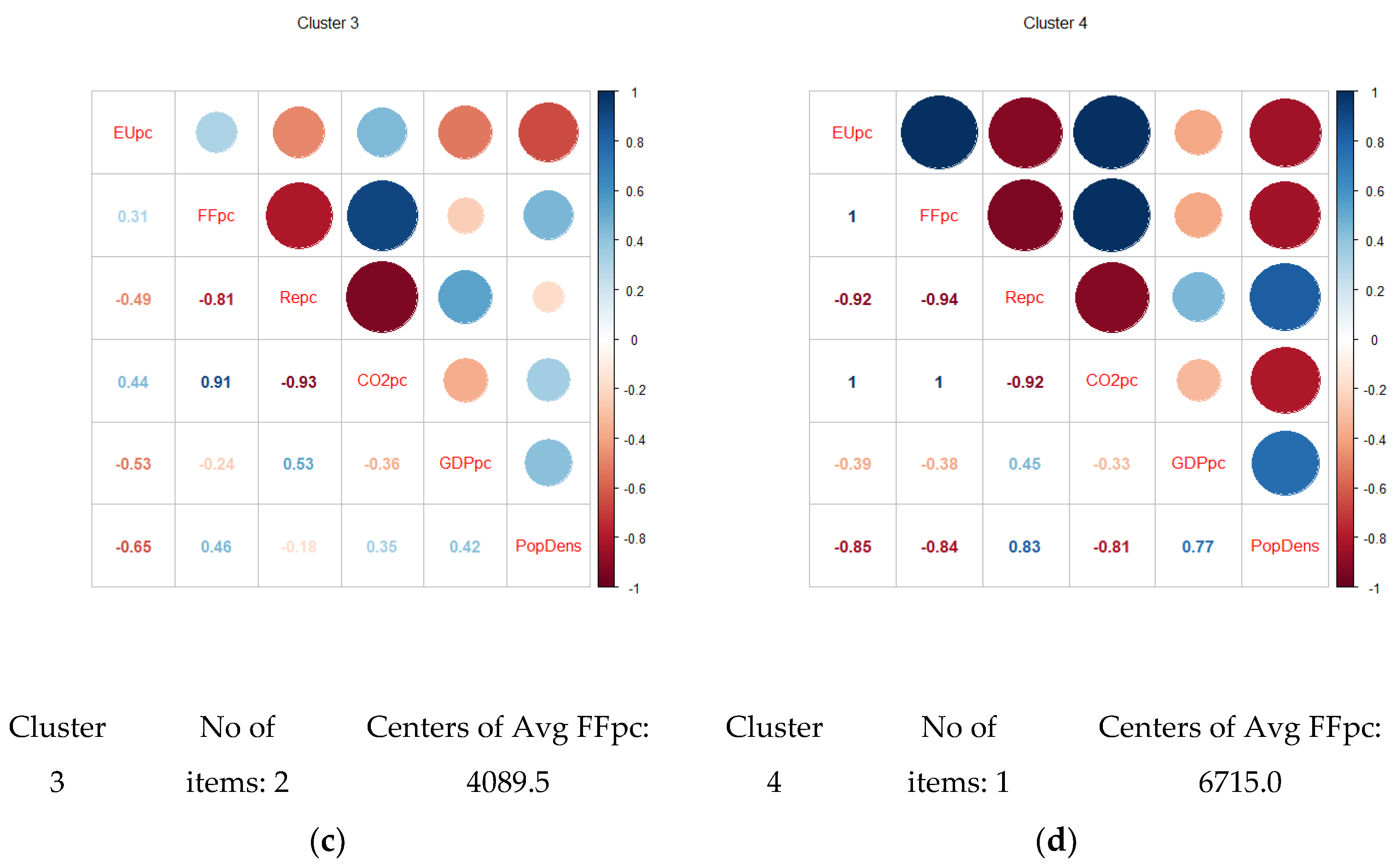
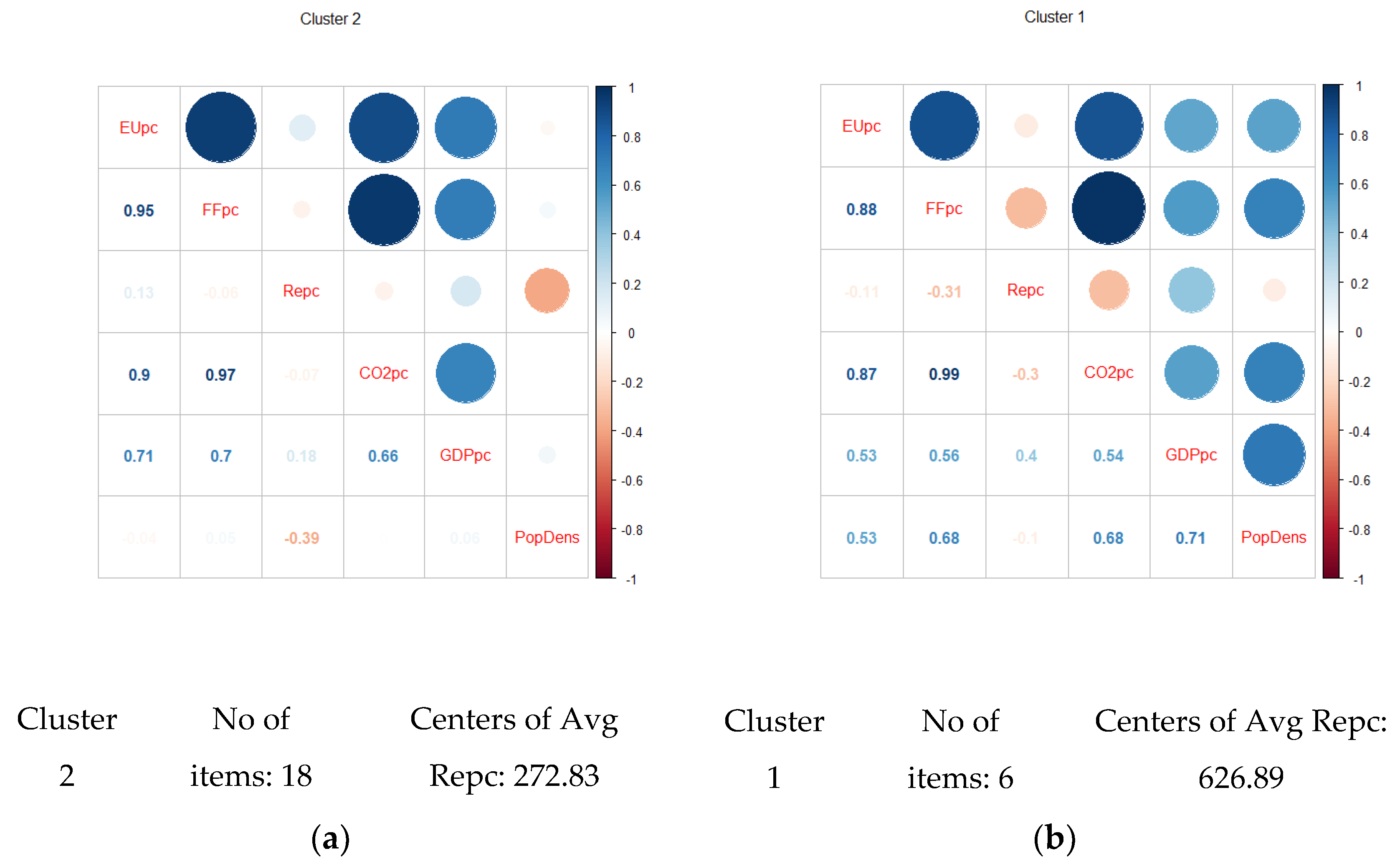
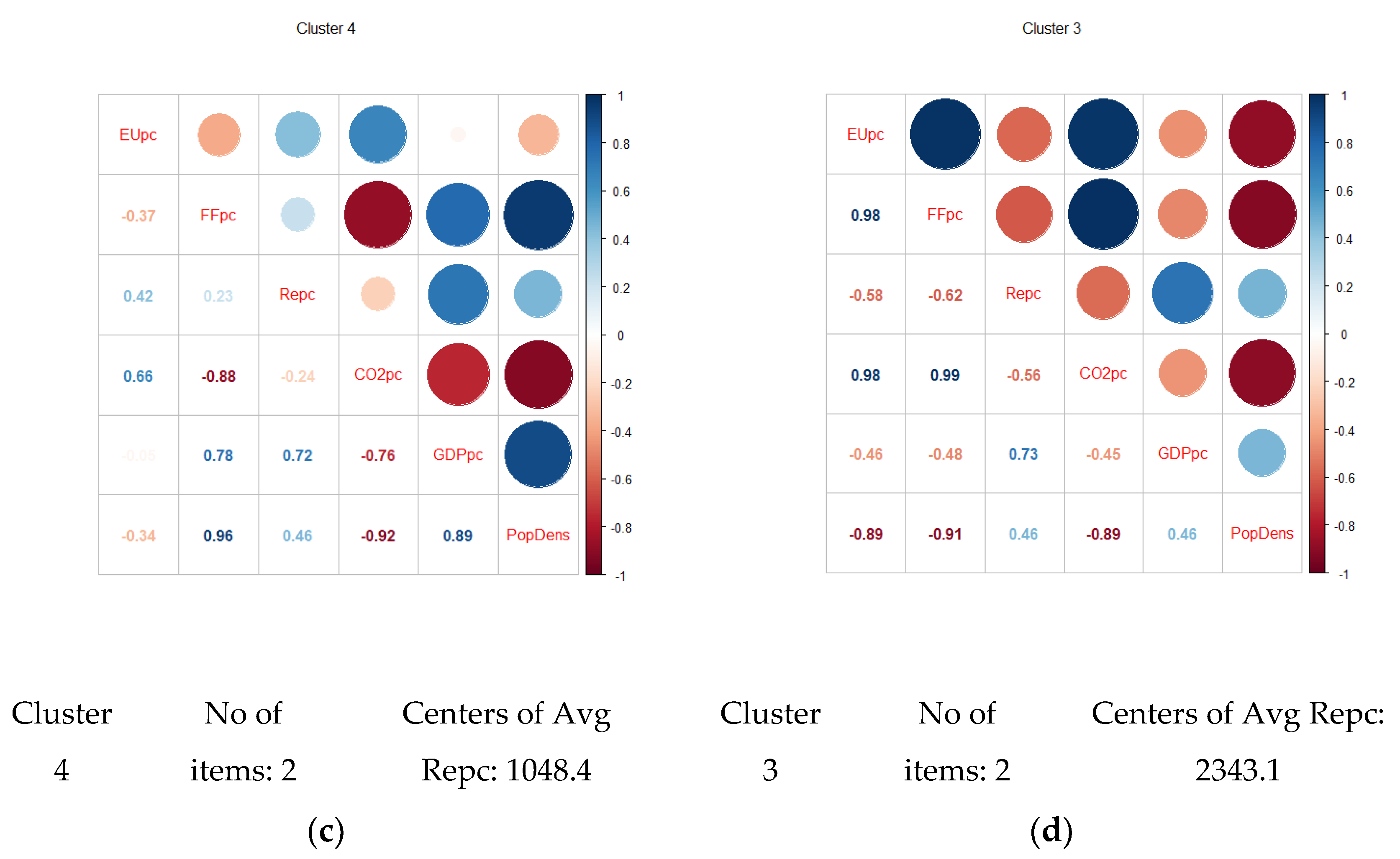

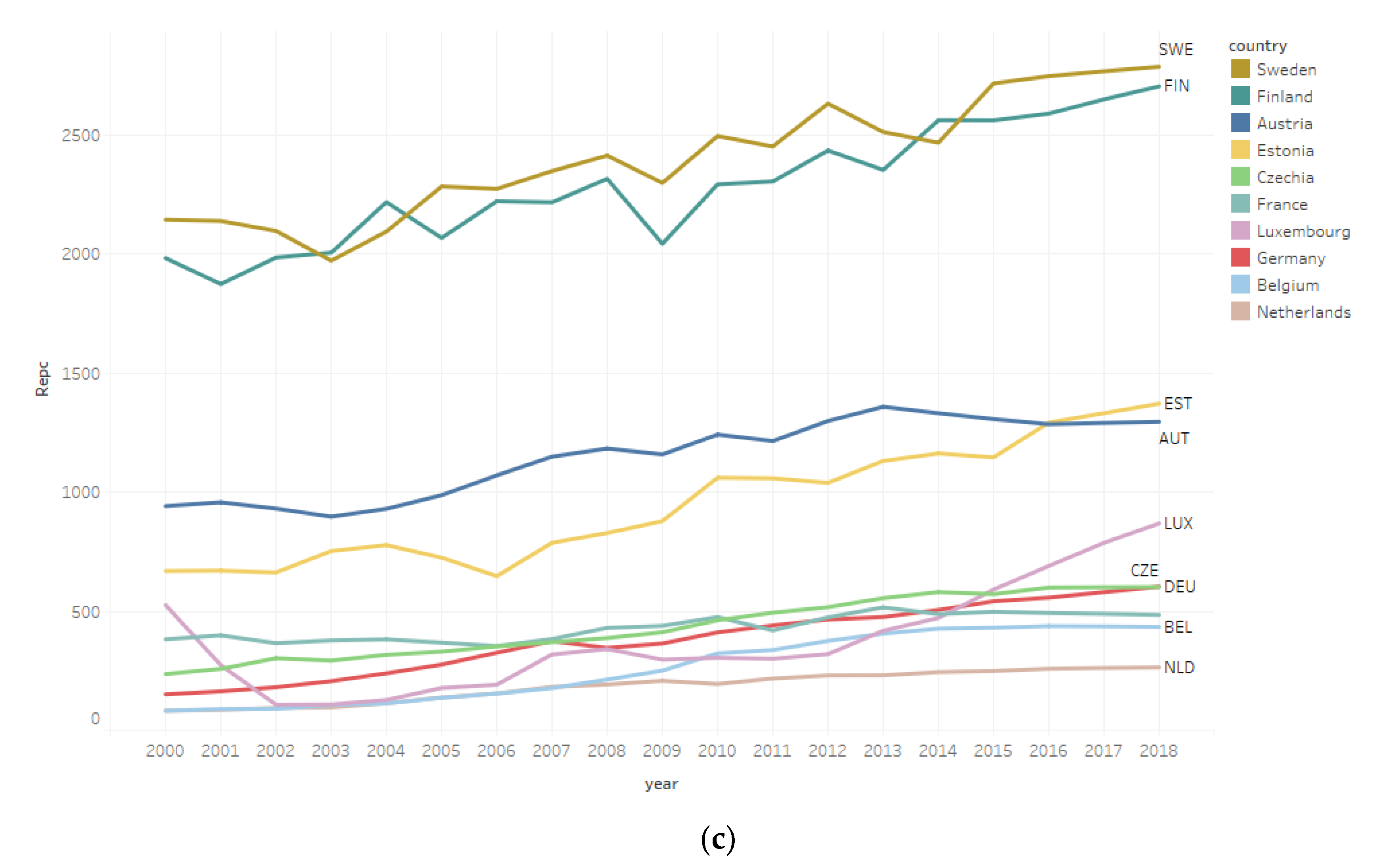

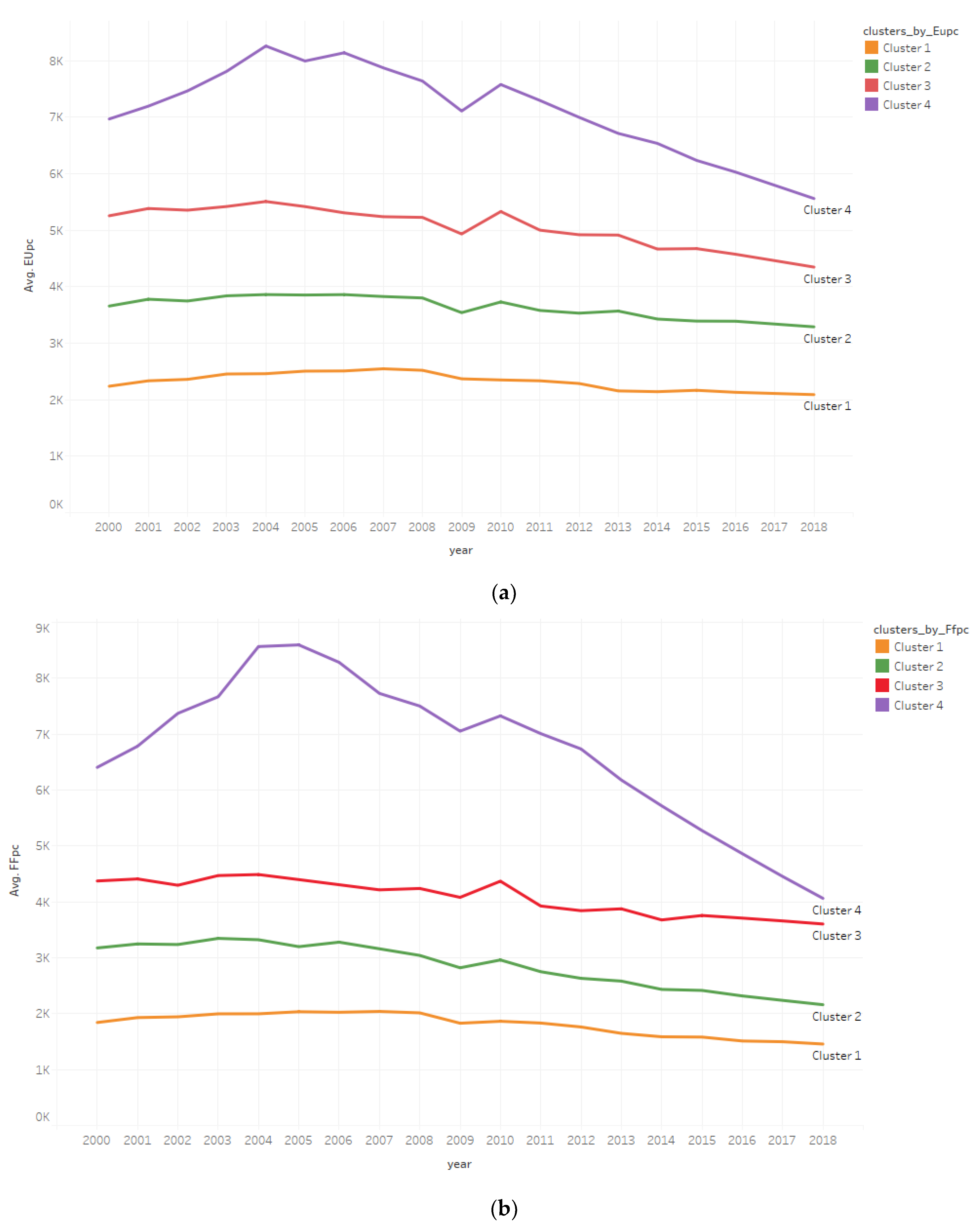
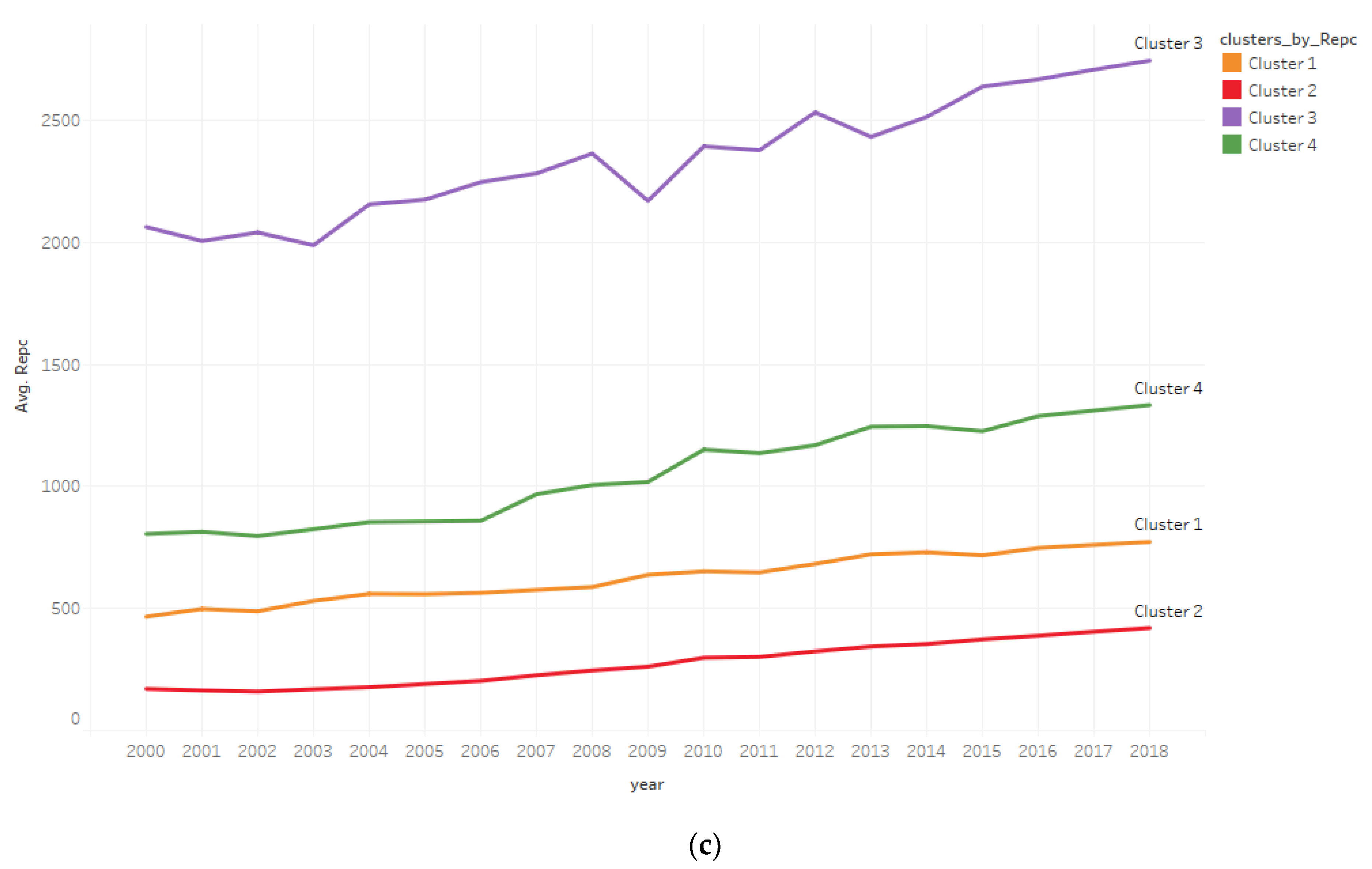
Publisher’s Note: MDPI stays neutral with regard to jurisdictional claims in published maps and institutional affiliations. |
© 2021 by the authors. Licensee MDPI, Basel, Switzerland. This article is an open access article distributed under the terms and conditions of the Creative Commons Attribution (CC BY) license (https://creativecommons.org/licenses/by/4.0/).
Share and Cite
Halkos, G.; Tsilika, K. Visual Exploration of Energy Use in EU 28: Dynamics, Patterns, Policies. Energies 2021, 14, 7532. https://doi.org/10.3390/en14227532
Halkos G, Tsilika K. Visual Exploration of Energy Use in EU 28: Dynamics, Patterns, Policies. Energies. 2021; 14(22):7532. https://doi.org/10.3390/en14227532
Chicago/Turabian StyleHalkos, George, and Kyriaki Tsilika. 2021. "Visual Exploration of Energy Use in EU 28: Dynamics, Patterns, Policies" Energies 14, no. 22: 7532. https://doi.org/10.3390/en14227532






